Solar Eclipse Will Turn Sun Into a “Ring of Fire” Saturday—How to See It
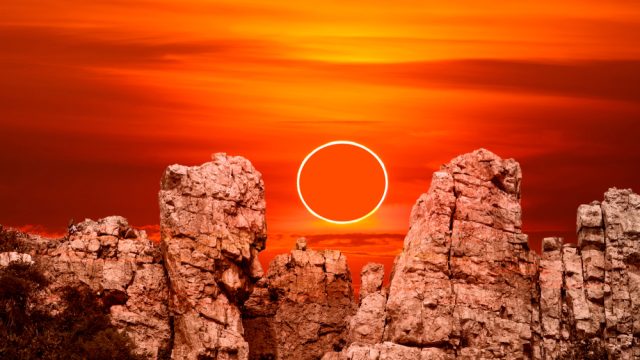
No matter what your level of interest in astronomy or the cosmos may be, a solar eclipse of any kind is usually considered a must-see event. The rare spectacle tends to draw out large crowds hoping to catch a glimpse of the phenomenon—while also creating a unique feeling of camaraderie among everyone watching. Fortunately, you won’t have to wait very long to experience one for yourself as a special solar eclipse will turn the sun into a “ring of fire” this Saturday. Read on to learn how to see this special event.
RELATED: Intense Solar Storms May Peak Faster Than Expected—What That Means for Earth.
A special solar eclipse will turn the sun into a “ring of fire” this Saturday.
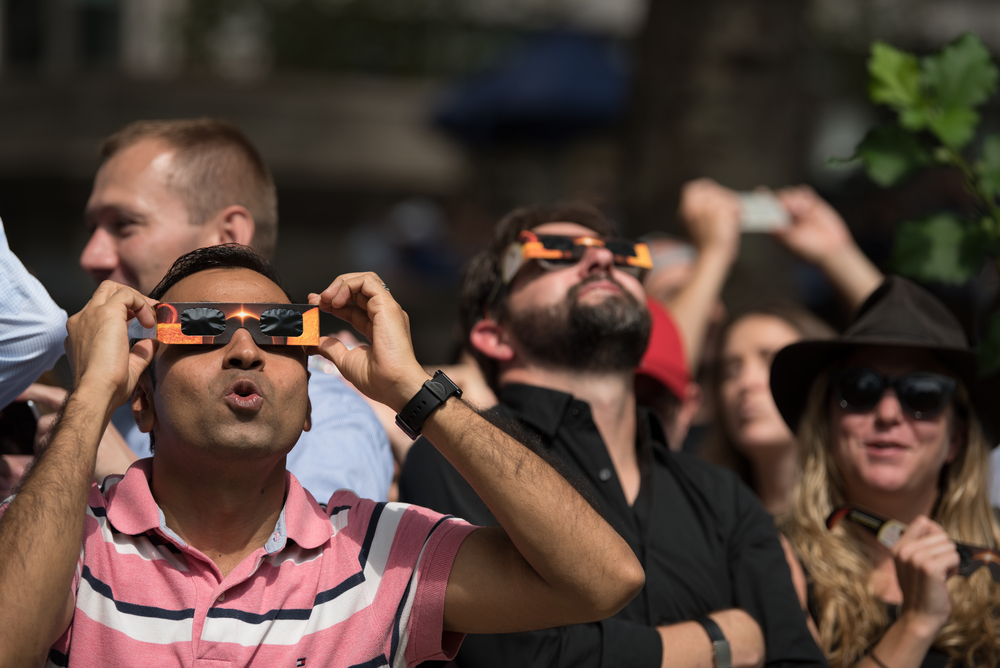
So far, this autumn has seen a busy astronomical calendar filled with consecutive “super moons” and the Draconid meteor shower. But things will really gear up this weekend when an annular solar eclipse will create a spectacle in the sky on Oct. 14.
Just like a total eclipse, an annular eclipse occurs when the moon passes between the Earth and the sun and casts a shadow. However, Saturday’s event will take place when the moon is at its furthest point from our planet in its orbit, according to NASA. This means it will only partially cover the sun and create a “ring of fire.”
RELATED: The 10 Best Destinations for Stargazing in the U.S.
The spectacle will be visible over the U.S. beginning in the morning on Saturday.
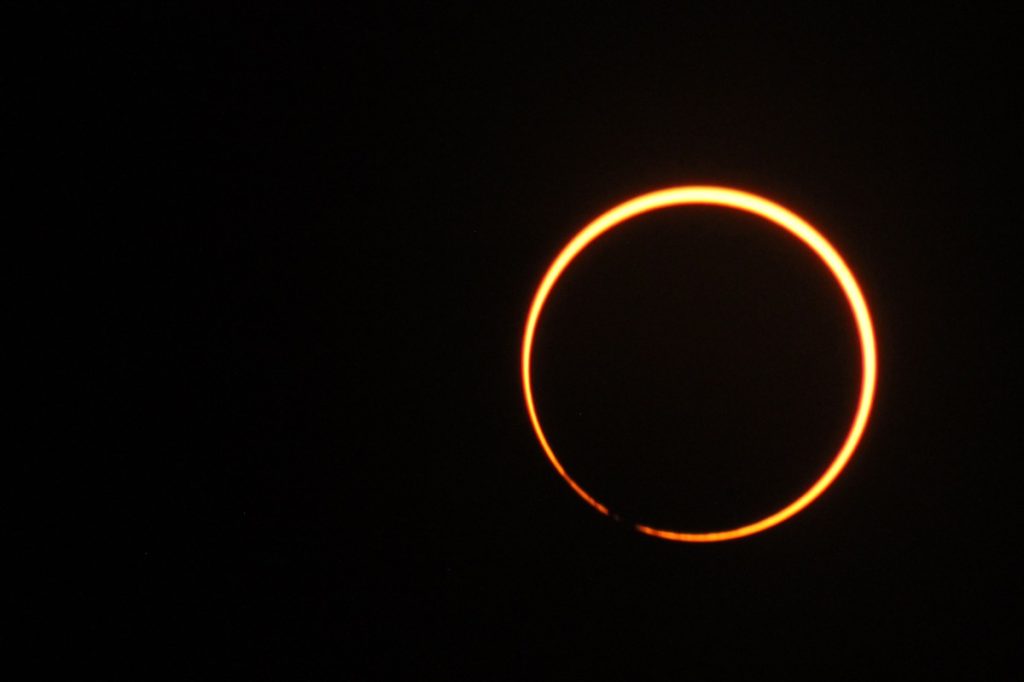
Millions of people across the U.S. will have a view of at least a partial eclipse when it takes place this upcoming weekend. However, those who are in the path of annularity, which runs from the Pacific Northwest through the Southwest, will get to experience the most drastic views, according to NASA.
The first signs of partial eclipse will start on the Oregon coast around 8:06 a.m. PDT before it hits annularity a little more than an hour later, according to the space agency. The path then flows south, going through parts of California, Nevada, Utah, Arizona, Colorado, New Mexico, and Texas over the next few hours.
The last bits of the partial eclipse will be visible from the U.S. near Corpus Christi on the Texas coast, where the sun will be fully uncovered again around 1:30 p.m. CDT, per NASA. From there, viewers in Central and South America will get to take in the event, as it crosses over Mexico, Guatemala, Belize, Honduras, Nicaragua, Panama, Colombia, and finally, Northern Brazil.
Even though the path of annularity is limited to a few regions, people across the U.S. will still be able to view a partial eclipse. People as far north as New England will still experience a 10 percent blockage of the sun, while places like Florida and Chicago, Illinois, can expect up to 40 percent.
RELATED: 6 Stargazing Secrets, According to Astronomy Experts.
Make sure you’re prepared with the proper protective eyewear for the event.
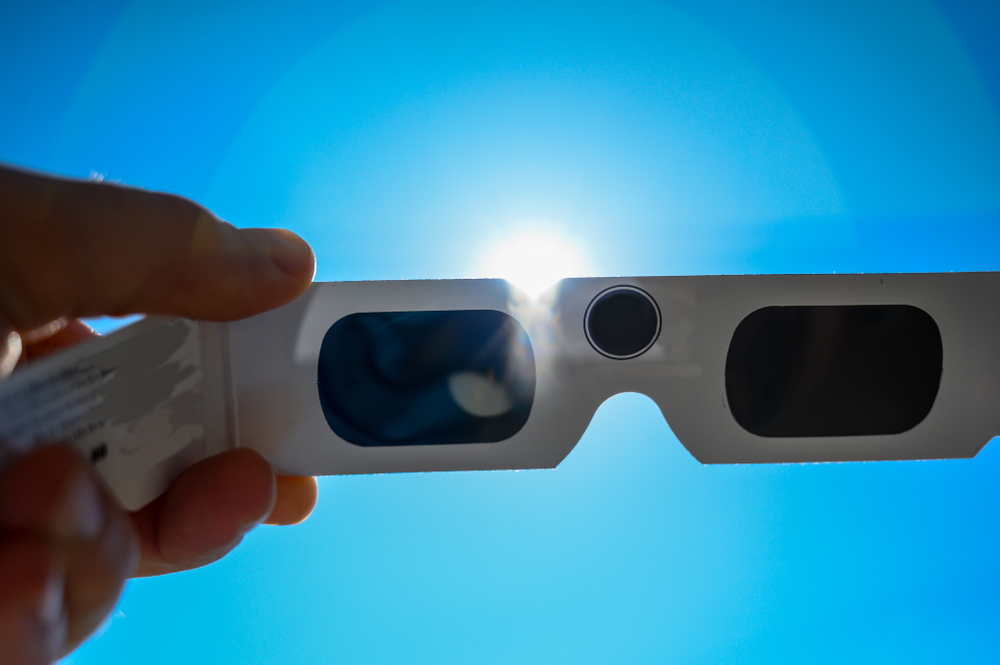
Of course, stepping out to catch sight of a solar eclipse takes a little more preparation than just looking up. Unlike a total eclipse which offers a few minutes of full coverage, there’s no point at which an annular eclipse is safe to view without protection—meaning you’ll need the proper safety equipment, according to NASA.
The space agency stresses that everyday sunglasses are not nearly strong enough to protect your eyes for viewing, saying that appropriate eyewear is “thousands of times darker and ought to comply with the ISO 12312-2 international standard.” But unfortunately, experts are cautioning that not all pairs are genuine.
“Unfortunately, there are a lot of fakes out there, and then when you look at the sun, you are going to damage your eyes, and if you look long enough at the sun, that damage will be permanent,” Torvald Hessel, a solar eclipse expert, told local Austin, Texas, CBS affiliate KEYE.
NASA points out that all certified pairs will have the ISO logo printed on them—but since some counterfeit glasses will still use this logo, it’s best to pick up your pair from a reputable source or trusted retailer recognized by the American Astronomical Society (AAS).
RELATED: 8 Amazing Things You Can See in the Night Sky Without a Telescope.
Check local conditions and see what time is best for viewing in your area ahead of Saturday.
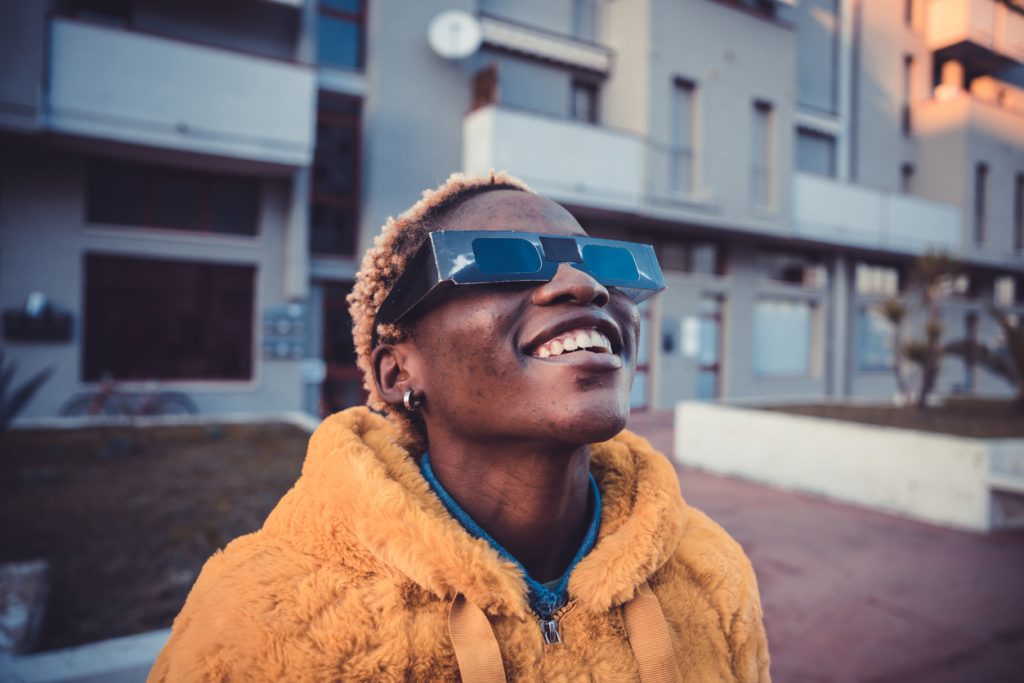
As any eclipse chaser will tell you, optimal viewing conditions on Saturday will often come down to local weather conditions. If you’re making viewing plans, check the forecast for your area ahead of time—keeping in mind that you’ll still be able to notice the daytime darkness created by the event even if there’s cloud cover, according to NASA. You can also use the space agency’s helpful interactive website to find what time you’ll have the best viewing experience.
Besides checking that your protective glasses are bonafide, it’s also important to inspect any pairs you’ve had since previous eclipses for wear and tear. The space agency warns that scratches and other damage are a sign that they should be discarded and replaced to ensure your eyes aren’t damaged.
And if you’re planning on using a telescope, camera lens, or binoculars to get a better view, you must outfit them with the necessary filters in advance. Wearing protective solar glasses while using any of these devices without this extra protection also won’t help as “the concentrated solar rays will burn through the filter and cause serious eye injury,” NASA explains.
RELATED: For more up-to-date information, sign up for our daily newsletter.
- Source: https://science.nasa.gov/eclipses/future-eclipses/eclipse-2023/what-to-expect/
- Source: https://science.nasa.gov/eclipses/future-eclipses/eclipse-2023/where-when/
- Source: https://science.nasa.gov/eclipses/future-eclipses/eclipse-2023/safety/
- Source: https://svs.gsfc.nasa.gov/webapps/eclipse-explorer/